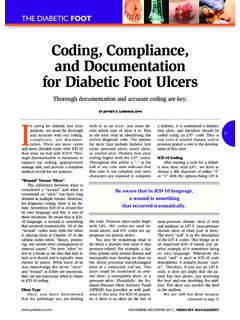Transcription of Background paper: PROPOSED REVISION OF THE …
1 1 Background paper : PROPOSED REVISION OF THE POLICY ON rabies VACCINES AND rabies IMMUNOGLOBULINS Prepared by the SAGE Working Group on rabies vaccines and immunoglobulins and the World Health Organization (WHO) Secretariat September 22, 2017 2 EXECUTIVE SUMMARY Preamble rabies is a vaccine -preventable viral zoonotic disease responsible for an estimated 59, 000 human deaths every year. The majority of cases occur in Africa and Asia, and more than 40% of cases occur in children less than 15 years of age.
2 Dogs are responsible for over 95% of all rabies transmissions to humans. rabies prevention involves two main, non-exclusive strategies: (i) dog vaccination to interrupt virus transmission to humans; and (ii) human vaccination post-exposure prophylaxis (PEP) and pre-exposure prophylaxis (PrEP) using purified cell-culture and embryonated egg-based vaccines (CCEEVs). PEP is administered promptly following exposure to rabies , and consists of timely, rigorous wound care, administration of rabies immunoglobulin (RIG) in severe exposures, and a series of intradermal (ID) or intramuscular (IM) rabies vaccines.
3 Long, complicated PEP regimens and the high cost, low availability, uncertain quality and short shelf life of RIG are barriers to PEP implementation. PrEP is indicated for individuals who face occupational and/or travel-related exposure to rabies virus in specific settings or over an extended period. PrEP consists of a series of rabies vaccines, followed by booster vaccinations in case of exposure. Gaps exist between the current WHO recommendations and the present practice of PrEP and PEP administration in many rabies -endemic countries.
4 This update addresses this mismatch using new evidence on rabies vaccine and RIG use, including: (i) shorter, more feasible PrEP and PEP protocols; (ii) cost-effectiveness of implementation; and (iii) the potential of new vaccines to improve access to care. Key Conclusions and PROPOSED Recommendations Pre-exposure prophylaxis (PrEP) PrEP as a population-level intervention is unlikely to be cost-effective, and should only be considered in extreme circumstances, where the incidence of rabies exposures is unusually high (>6%), and RIG use low.
5 Recommendations for PrEP boosters and serological monitoring have been updated, taking into account: (i) timely access to rabies biologics; (ii) access to rabies serological testing; (iii) immunogenicity of booster vaccination; and (iv) cost-effectiveness. The following accelerated PrEP regimens are considered as efficacious as current PrEP regimens: 2-site ID regimen on days 0 and 7 1-site IM regimen on days 0 and 7 Individuals who receive only a single dose of PrEP should be managed with full PEP in the case of potential rabies exposure prior to the second PrEP dose.
6 Individuals who are immunocompromised should receive a 3-visit ID or IM PrEP regimen on days 0, 7 and between days 21 and 28, and should be managed with full PEP in the case of a potential rabies exposure with particular emphasis on rigorous wound washing. Post-exposure prophylaxis (PEP) Intradermal vaccination is cost and dose-sparing by up to 85% compared to intramuscular vaccination. Modelling estimates show that for every 1000 vials of rabies vaccine , almost 500 additional patients could be treated using an accelerated ID PEP regimen (described below) compared to the Essen IM PEP regimen.
7 The following accelerated ID PEP regimen is considered as efficacious as current PEP regimens: 2-site ID regimen on days 0, 3 and 7 (IPC regimen) At present, there is no clinical data to support shortening IM regimens. The working group continues to recommend the Essen IM PEP regimen: 1-site IM regimen on days 0, 3, 7 and between days 14 and 28 Changing the route of administration during a PEP course ( from ID to IM or vice versa) is acceptable in unavoidable circumstances. Restarting PEP is not necessary and the schedule for the new route should be adopted if this occurs.
8 PEP is safe and effective for use in pregnant women. PEP should not be withheld from pregnant women. Individuals who are immunocompromised should receive meticulous wound cleaning, the most immunogenic PEP regimen available regardless of administration route, and high-quality RIG. Individuals experiencing bat-mediated rabies exposure should receive any WHO PEP regimen. Bites from bats may go unrecognised; cautionary principles apply to bat exposures. Persons exposed or re-exposed to rabies who have previously received PrEP, PEP, or who have discontinued PEP after receiving at least two doses of CCEEVs should receive either: 3 1-site ID PEP on days 0 and 3; or 4-site ID PEP on day 0 RIG is not indicated in previously immunized individuals.
9 rabies immunoglobulins (RIG) The recommendation to calculate maximum dosage of RIG based on body weight is maintained. Local infiltration of as much RIG as possible into and around the wound is most effective in preventing rabies . Injection of remaining RIG distant to the wound site is unlikely to confer additional protection. Equine (eRIG) and human (hRIG) rabies immunoglobulin are considered clinically equivalent. Skin testing prior to administration of eRIG should be abandoned. RIG is not indicated for healthy persons who have previously received PEP or PrEP.
10 Where RIG is not available or affordable, its use should be prioritised for persons with multiple or deep wounds; bites to the head, neck, hands, genitals or other highly innervated areas; immunocompromised patients; patients bitten by a probable or confirmed rabid animal; and patients with bites, scratches, or other mucous membrane exposure to a bat. Scrupulous wound cleaning and deep irrigation, with application of a potent antiseptic agent, and timely administration of the first CCEEV dose, are key to increasing survival where RIG is unavailable.















